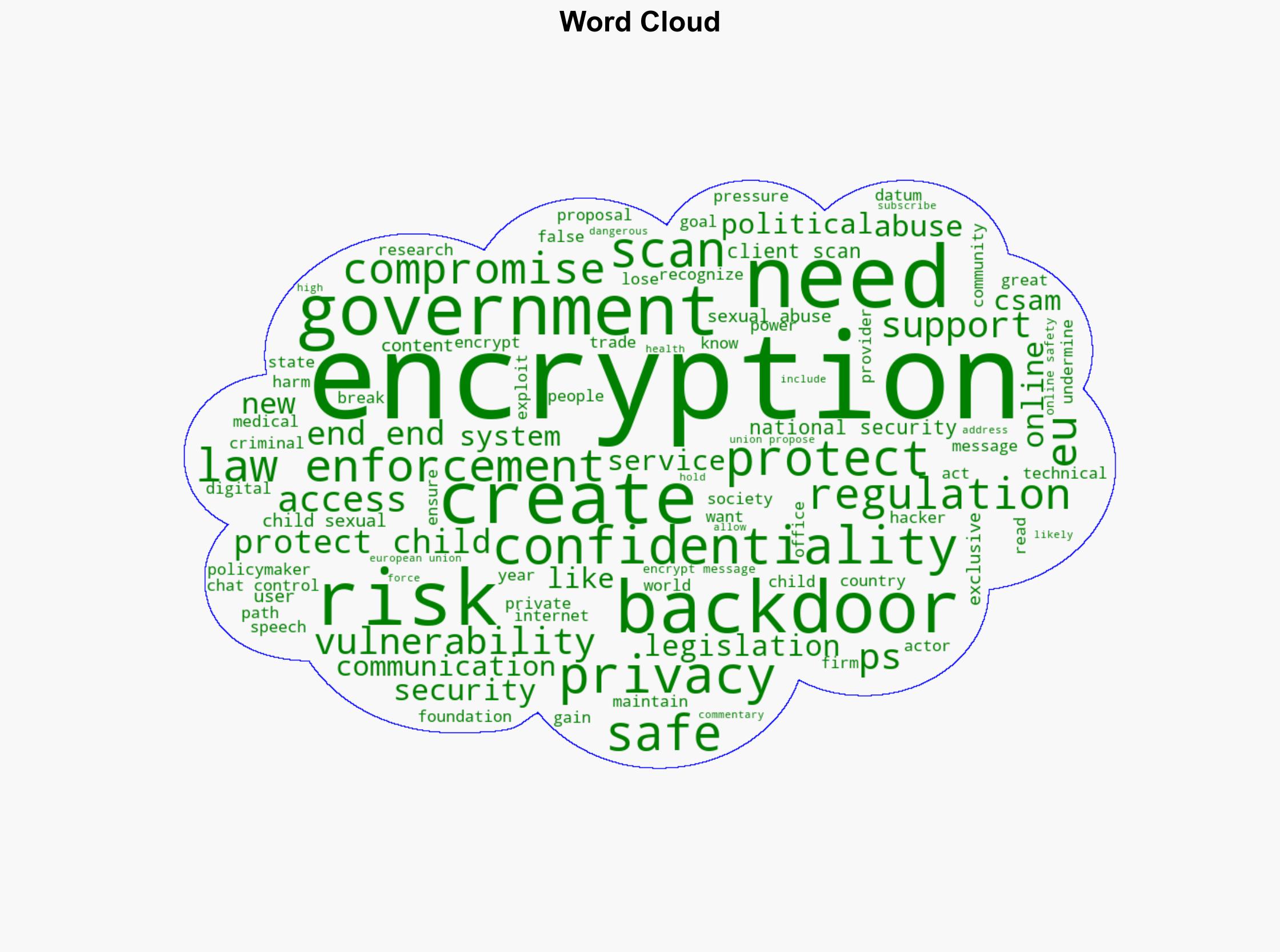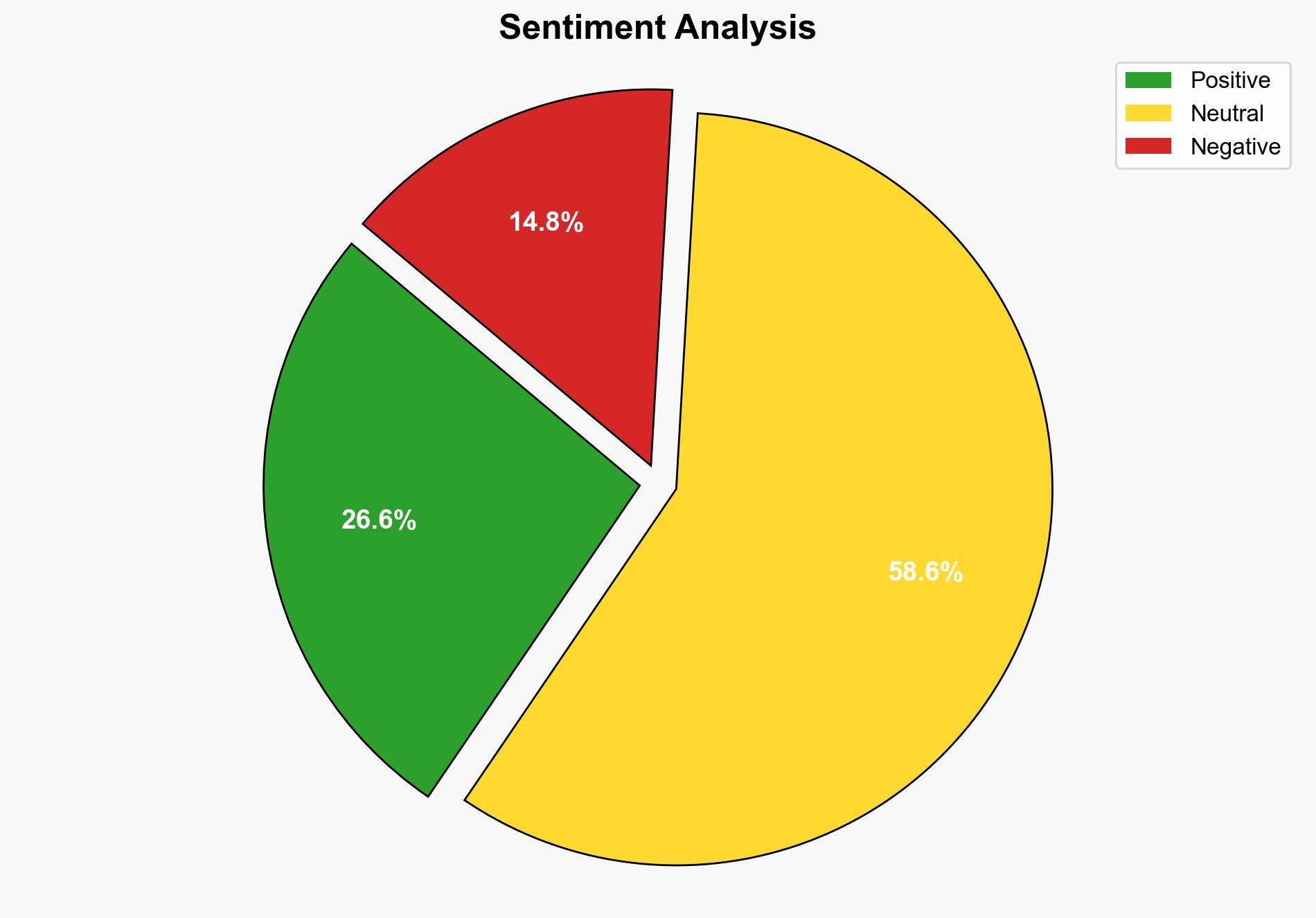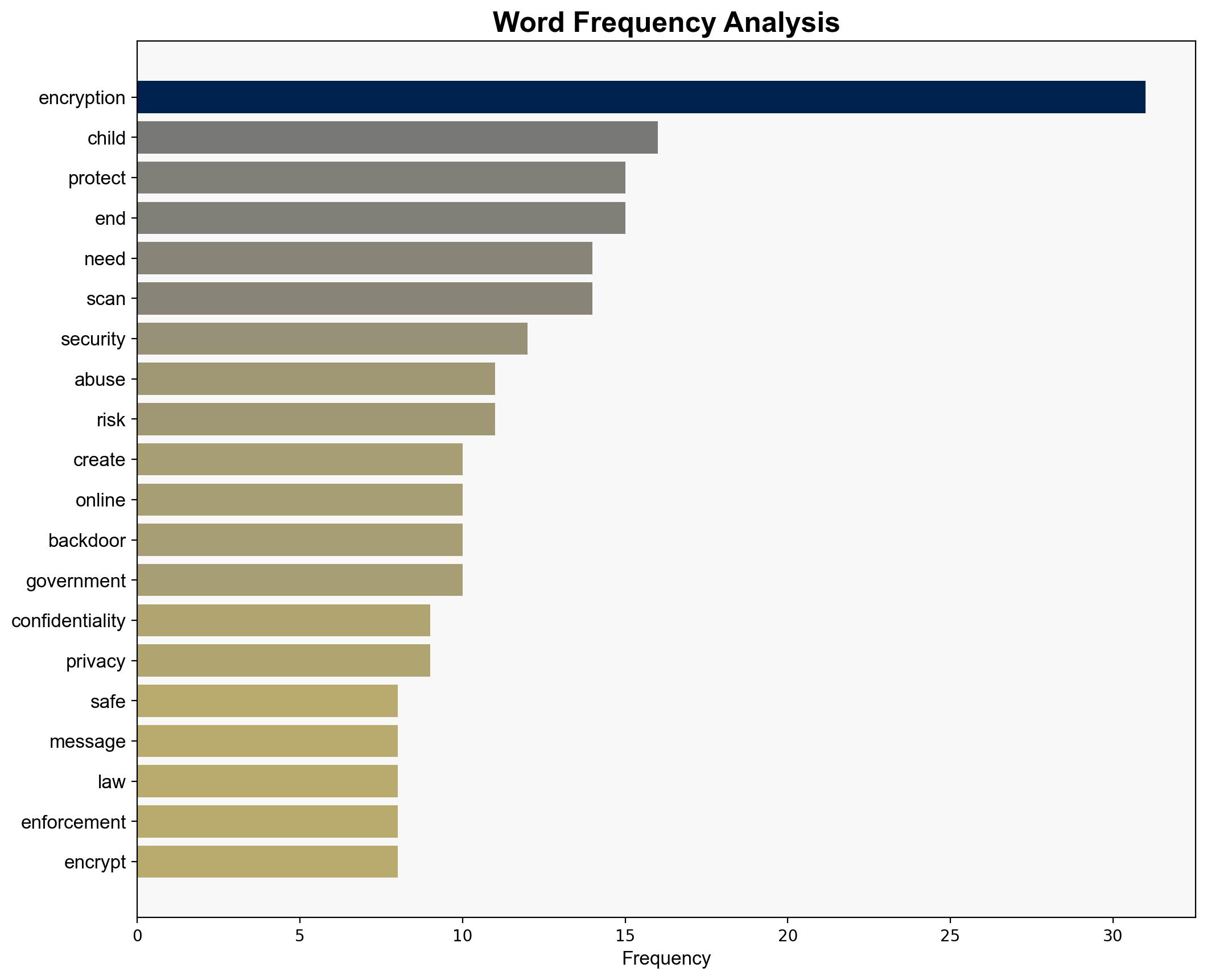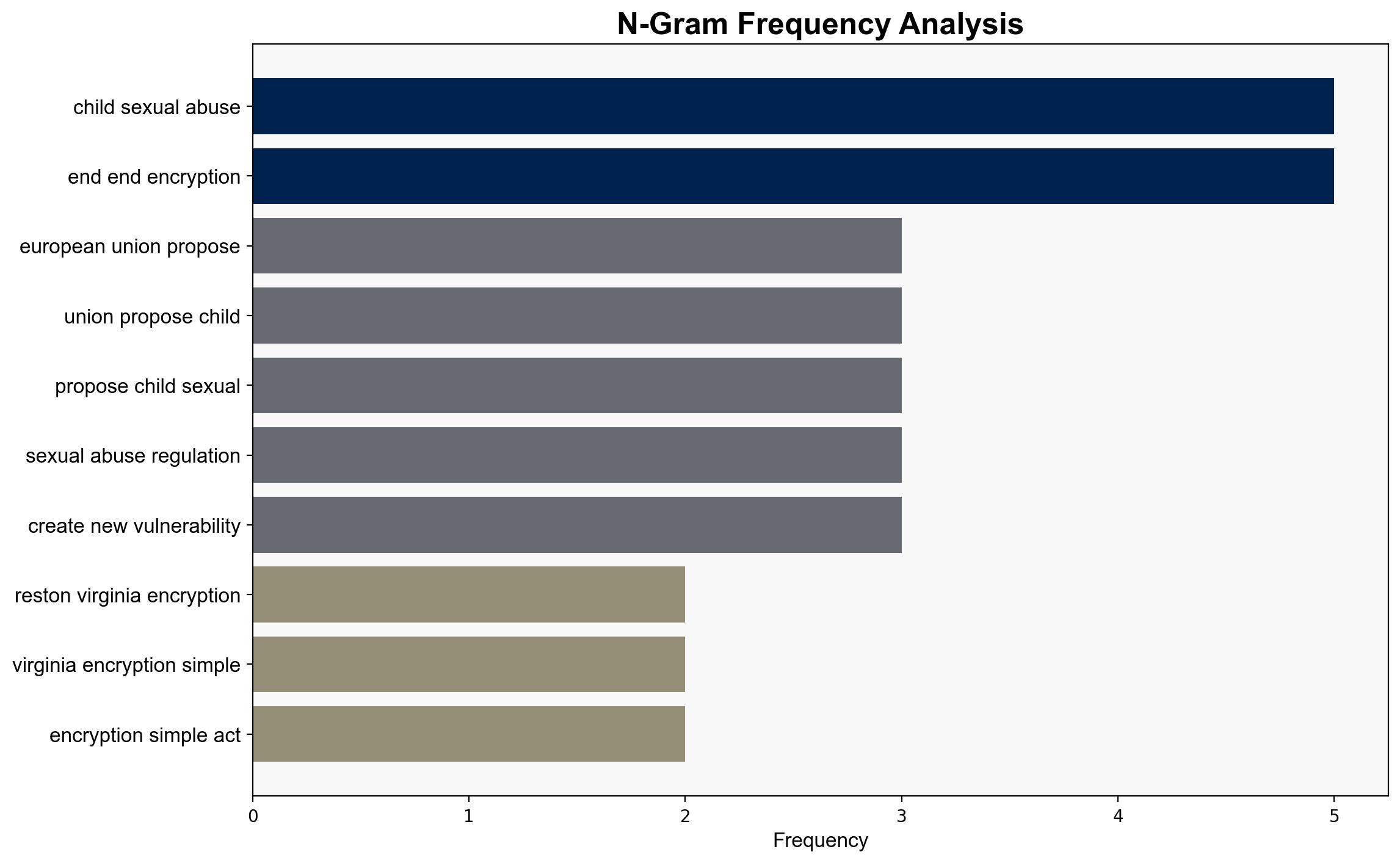In Defense of Encryption – Project Syndicate
Published on: 2025-10-15
Intelligence Report: In Defense of Encryption – Project Syndicate
1. BLUF (Bottom Line Up Front)
The most supported hypothesis is that the European Union’s proposed regulation on child sexual abuse material (CSAM) could inadvertently weaken encryption, creating vulnerabilities that compromise both personal and national security. Confidence Level: Moderate. Recommended action is to advocate for a balanced approach that addresses child safety without undermining encryption.
2. Competing Hypotheses
Hypothesis 1: The EU’s proposed regulation will effectively protect children from online abuse without significantly compromising encryption.
Hypothesis 2: The EU’s proposed regulation will weaken encryption, creating vulnerabilities that could be exploited by malicious actors, thereby compromising both personal and national security.
Using the Analysis of Competing Hypotheses (ACH) 2.0, Hypothesis 2 is better supported. The intelligence suggests that creating backdoors or client-side scanning could be exploited by bad actors, as demonstrated by historical cybersecurity research.
3. Key Assumptions and Red Flags
Assumptions:
– Hypothesis 1 assumes that technological solutions can effectively balance child protection and encryption integrity.
– Hypothesis 2 assumes that any weakening of encryption inherently leads to exploitation by malicious actors.
Red Flags:
– Lack of detailed technical solutions in the proposal that ensure both child protection and encryption integrity.
– Historical evidence of backdoors being exploited by unintended parties.
4. Implications and Strategic Risks
The regulation could lead to increased cybersecurity risks if encryption is weakened, potentially impacting economic stability, privacy rights, and national security. There is a risk of setting a precedent that other authoritarian regimes might follow, further endangering global digital privacy and security.
5. Recommendations and Outlook
- Engage in dialogue with EU policymakers to explore alternative methods that protect children without compromising encryption.
- Invest in research and development of advanced encryption technologies that can accommodate lawful access without creating vulnerabilities.
- Scenario Projections:
- Best Case: A balanced regulation is achieved, enhancing child safety while maintaining encryption integrity.
- Worst Case: Encryption is weakened, leading to widespread exploitation by malicious actors.
- Most Likely: Ongoing debate and incremental adjustments to the regulation as technical and ethical challenges are addressed.
6. Key Individuals and Entities
The report does not specify individuals by name. The European Union is the primary entity involved in the proposed regulation.
7. Thematic Tags
national security threats, cybersecurity, counter-terrorism, regional focus





